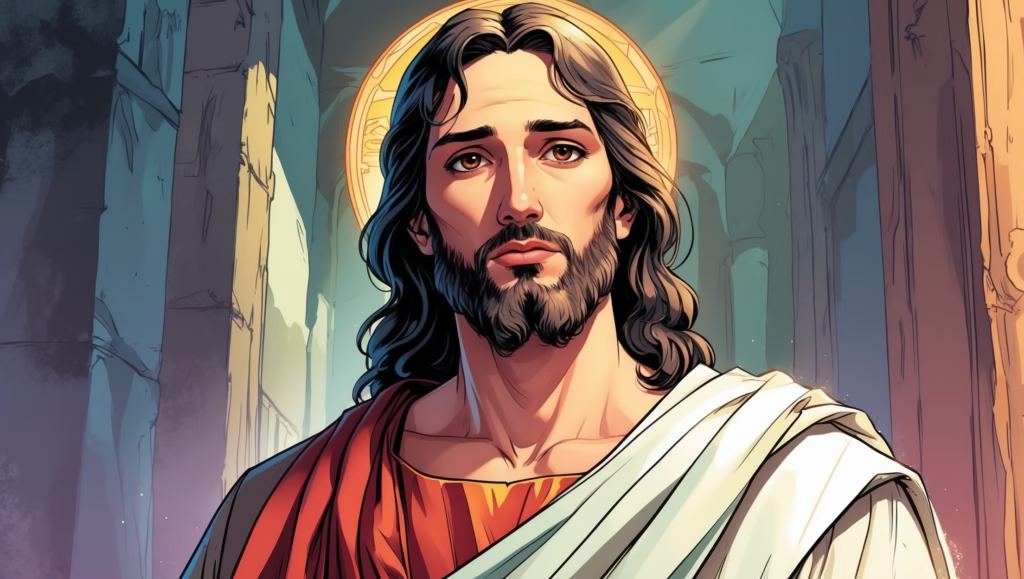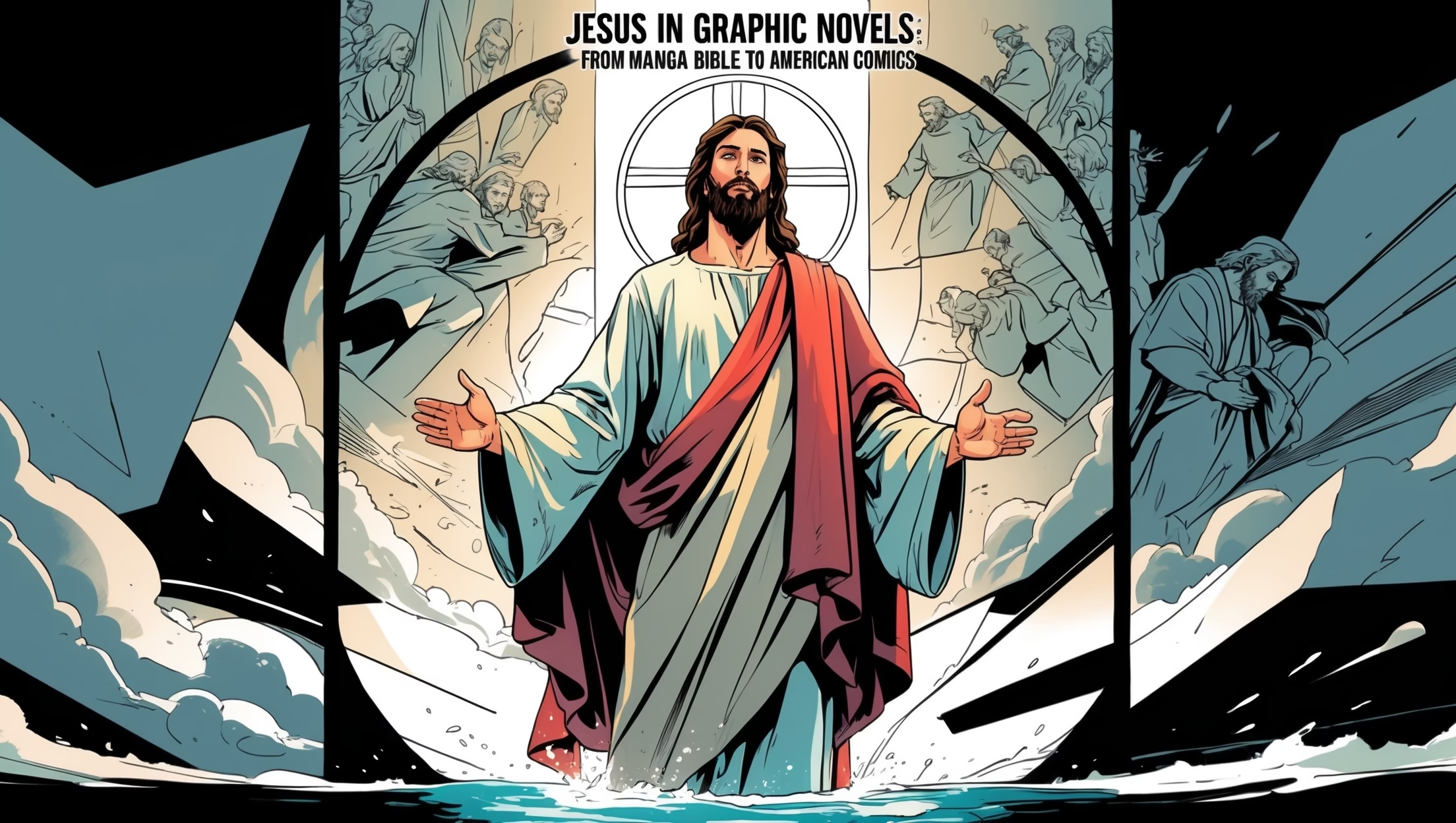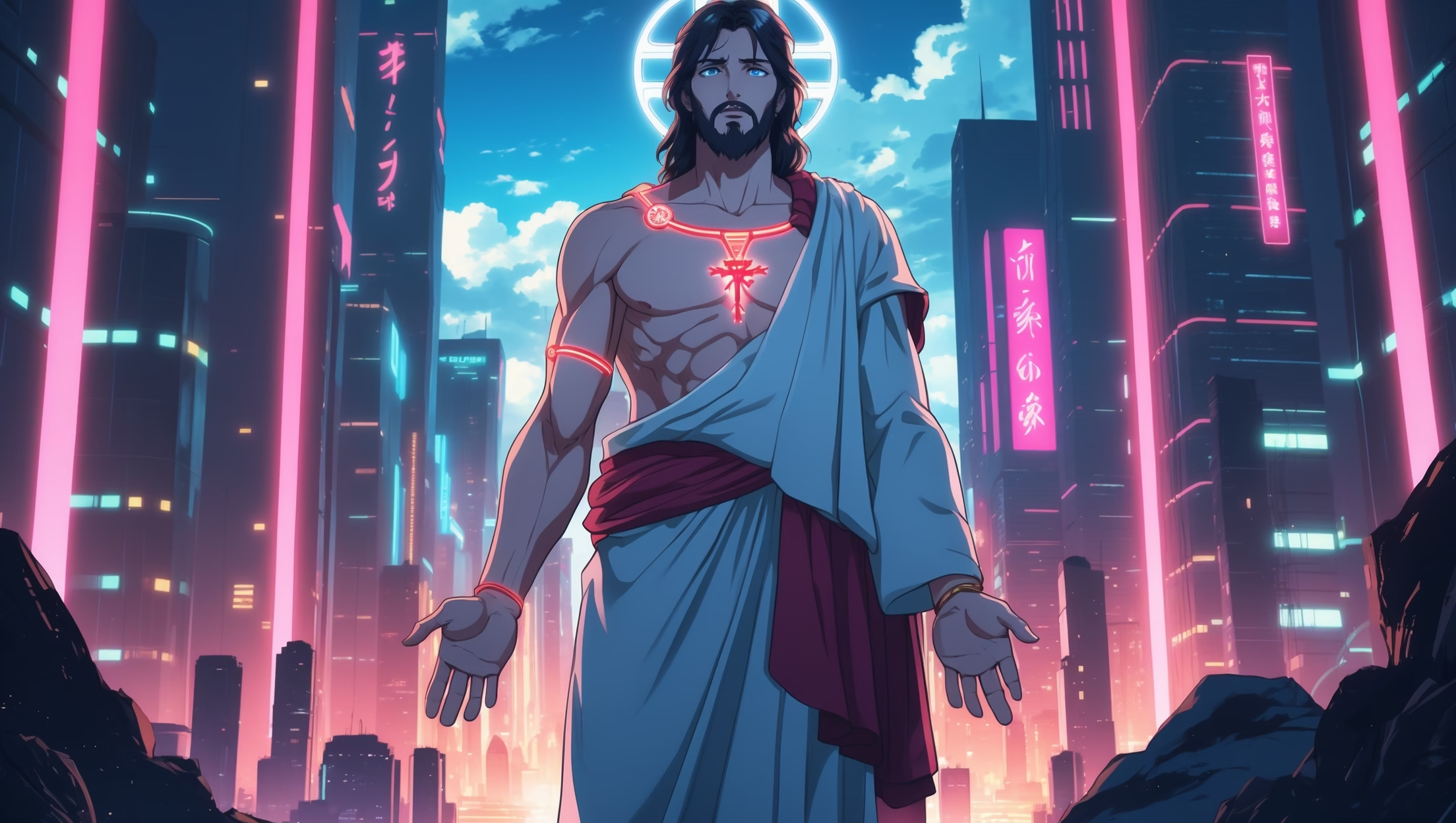How Sequential Art Reimagines the Gospels
The life of Jesus Christ has inspired countless forms of artistic expression over two millennia—from Renaissance paintings to contemporary music and film. In the 20th and 21st centuries, graphic novels and comics have emerged as a vibrant medium to reinterpret the Gospel narratives. By combining visual storytelling with text, sequential art offers new ways to experience Christ’s teachings, making them accessible to diverse audiences, including youth, secular readers, and global populations.

Groundbreaking Works in Sequential Art
Manga Messiah
Japanese artists have adopted the shōnen manga style to depict Jesus as an accessible, dynamic character. Manga Messiah presents the Sermon on the Mount with speedlines and exaggerated expressions, conveying the urgency and emotional weight of Christ’s teachings. The storytelling rhythm mirrors action manga, allowing readers to engage with parables as both narrative and visual spectacle.
Innovation:
- Action-oriented panel layout for rapid storytelling
- Emotional emphasis through close-ups and visual metaphor
- Inclusion of cultural elements familiar to Japanese audiences
The Comic Book Bible
Emerging during the Bronze Age of comics, The Comic Book Bible recast Jesus as a superheroic figure. Panels depict walking on water with exaggerated Kirby-style dots and dramatic angles, echoing the visual language of contemporaneous American superhero comics.
Innovation:
- Heroic framing conveys divine authority and power
- Dynamic composition emphasizes movement and miracle
- Introduces moral lessons through visual exaggeration
Testament (DC Vertigo)
In postmodern reinterpretations such as Testament, Jesus is portrayed in apocalyptic, dystopian settings, reflecting contemporary anxieties. Scenes such as the Last Supper include cyborg disciples, blending futuristic sci-fi with biblical narrative, emphasizing the timelessness and adaptability of Christ’s story.
Innovation:
- Explores theological concepts in metaphorical sci-fi settings
- Challenges traditional depictions of Jesus’ humanity and divinity
- Appeals to mature audiences seeking philosophical depth
Theological and Cultural Impacts
Visual Parables
Graphic novels often translate abstract spiritual ideas into concrete visual metaphors. For example, Spider-Man’s mantra—“With great power comes great responsibility”—parallels Jesus’ teaching on servant leadership. Comics make ethical principles tangible, illustrating mercy, sacrifice, and justice through imagery rather than abstract text alone.
Diverse Depictions of Christ
Sequential art provides opportunities to challenge Eurocentric portrayals of Jesus. Works like Truth: Red, White & Black (Marvel) depict Black Jesus, reclaiming narratives and emphasizing the universality of the Gospel. These depictions confront cultural biases and open conversations about representation and inclusivity in faith storytelling.
Controversy and Debate
Graphic portrayals of Jesus occasionally provoke controversy. In 2023, Malaysia banned comic Bibles for allegedly undermining traditional religious education. Additionally, the rise of AI-generated Gospel manga on platforms like Amazon raises questions about authenticity, intellectual property, and theological fidelity. Critics ask whether automated storytelling can responsibly convey sacred narratives without distortion.
Sequential Art Techniques Enhancing Gospel Stories
- Panel Composition
Sequential art uses juxtaposed images to convey parallel narratives or emotional depth. For instance, the multiplication of loaves and fishes can be shown as a series of panels emphasizing both the miracle and human response—an experiential approach impossible in text alone. - Symbolism and Visual Metaphor
- Haloes, lighting, and color schemes convey divine presence
- Stormy skies reflect inner conflict or societal chaos
- Visual exaggeration communicates spiritual intensity
- Haloes, lighting, and color schemes convey divine presence
- Dynamic Storytelling
- Manga speedlines suggest movement and urgency
- Splash pages highlight key miracles or teachings
- Sequential juxtaposition helps readers internalize parables through narrative flow
- Manga speedlines suggest movement and urgency
Modern Cultural Significance
Engaging Young Audiences
Graphic novels resonate with youth, who are visually literate and culturally attuned to pop media. Manga adaptations, superhero-style comics, and dystopian retellings make Jesus’ teachings relatable without compromising theological themes.
Cross-Cultural Accessibility
Sequential art transcends language barriers. Manga Messiah reaches Japanese readers; American superhero Bibles appeal to Western comic enthusiasts. Visual storytelling allows global audiences to interact with the Gospel in culturally familiar formats.
Dialogues Between Tradition and Innovation
While some traditionalists critique comic portrayals as irreverent, these works often invite deeper engagement with Scripture, prompting readers to reflect on moral and theological questions in new ways. Graphic novels create a space for creative theological dialogue across cultures and generations.
Challenges and Opportunities
- Accuracy vs. Artistic Freedom
Authors must balance fidelity to Scripture with imaginative storytelling. While exaggeration and futuristic settings attract readers, they risk misrepresentation of Christ’s life and teachings. - Digital Transformation
AI-generated comics and digital platforms increase accessibility but raise ethical questions about authenticity, copyright, and theological oversight. - Educational Potential
Schools and churches increasingly use graphic novels as teaching tools. By pairing visual narratives with Bible study, educators can enhance comprehension and retention, particularly for younger or non-traditional learners.
Conclusion
The evolution of Jesus in graphic novels—from Manga Messiah to dystopian Testament—demonstrates the flexibility and enduring relevance of Christ’s story. Sequential art combines text and imagery to create immersive theological experiences, making parables, miracles, and ethical teachings accessible to diverse audiences.
By portraying Jesus as a shōnen hero, a superhero, or a post-apocalyptic savior, graphic novels bridge faith and culture, invite reflection on ethical living, and foster inclusivity in spiritual narratives. While controversial at times, these adaptations underscore a central truth: the story of Jesus continues to inspire creativity, dialogue, and devotion, proving that even in the digital age, His life and teachings remain profoundly influential.









